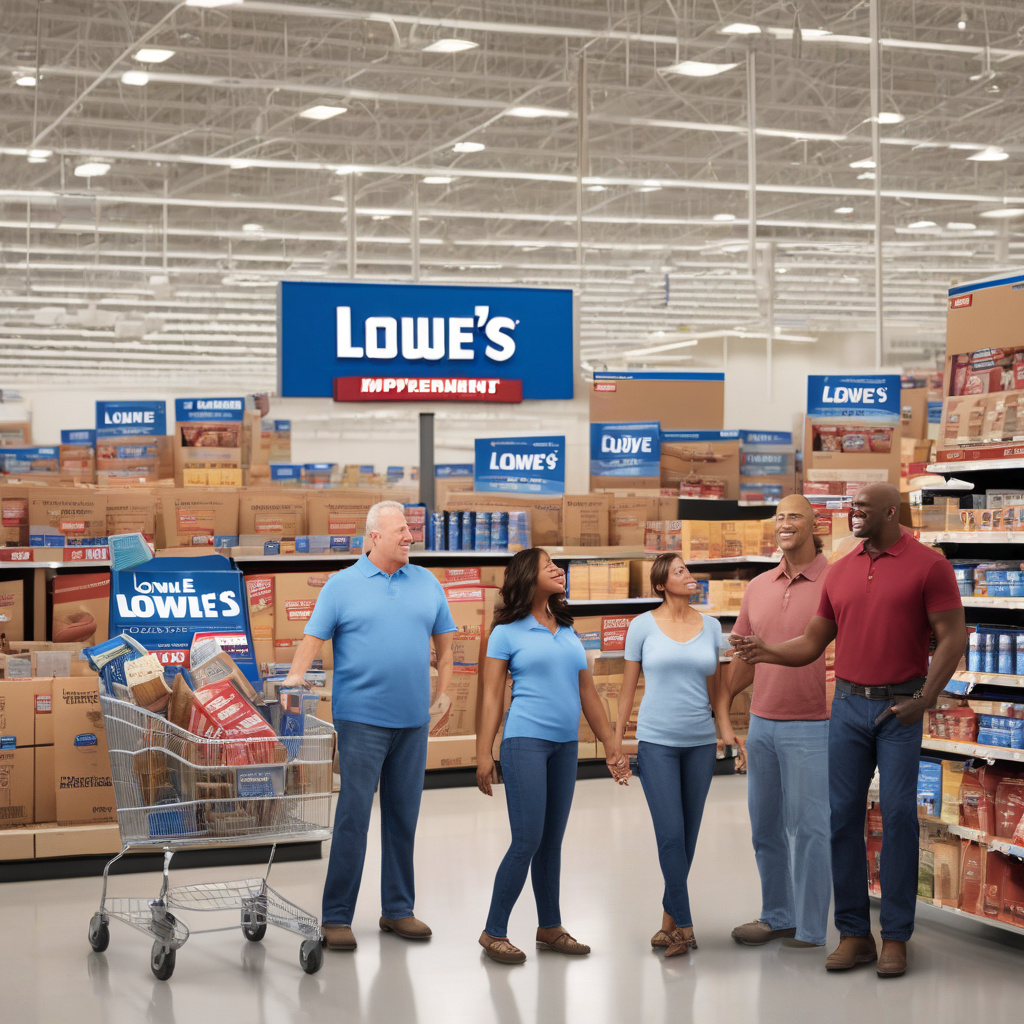Lowe’s Not Ruling Out Price Hikes on Some Items Due to Tariffs
In the ever-shifting landscape of retail, Lowe’s Companies Inc. has signaled a cautious approach regarding pricing strategies in light of potential tariff increases. As one of the leading home improvement retailers, Lowe’s is closely monitoring the economic environment and its implications for consumers and suppliers alike. The possibility of price hikes on certain items could have significant repercussions for both the company and its customers, prompting a deeper examination of the factors at play.
The retail sector has faced numerous challenges in recent years, with fluctuating tariffs being one of the most pressing issues. The U.S. government has implemented various tariffs on goods imported from different countries, particularly China. These tariffs aim to protect domestic industries but can inadvertently lead to increased costs for consumers. Lowe’s, like many retailers, has been forced to navigate this complex landscape while striving to maintain its competitive edge.
During a recent earnings call, Lowe’s Chief Financial Officer announced that the company is not ruling out price increases on specific items. This statement underscores the reality that tariffs could directly impact the cost of goods sold. Items such as power tools, appliances, and building materials might see a price adjustment as suppliers grapple with the additional financial burdens imposed by tariffs. As Lowe’s seeks to manage its profit margins, the potential for passing these costs onto consumers becomes a pressing concern.
For consumers, the prospect of higher prices can be daunting. Home improvement projects often represent a significant investment, and any increase in costs can deter customers from making purchases or completing their planned renovations. A study from the National Association of Home Builders indicates that rising material costs due to tariffs can lead to a decrease in construction activity. This trend not only affects retailers like Lowe’s but also has broader implications for the housing market and the economy as a whole.
To illustrate the impact of tariffs, consider the example of lumber. After the imposition of tariffs on Canadian lumber, prices surged, leading to a rise in overall construction costs. Lowe’s and its competitors were forced to adjust their pricing strategies accordingly. The company had to balance the need to remain competitive while addressing the rising costs passed down from suppliers. As a result, consumers saw higher prices on lumber-related products, which affected their purchasing decisions.
Lowe’s is not alone in its predicament. Other major retailers, including Home Depot, have also acknowledged the potential for price increases due to tariffs. The competitive nature of the home improvement market means that any price adjustments must be carefully calculated to avoid losing market share. Retailers are keenly aware that consumers are price-sensitive, and any significant increases could drive them to seek alternatives.
One strategy that Lowe’s has employed to mitigate the impact of tariffs is to diversify its supply chain. By sourcing products from various countries, the company can reduce its dependence on any single region. This approach not only helps to buffer against tariff fluctuations but also enables Lowe’s to offer a wider range of products at competitive prices. Additionally, the company has invested in technology and logistics to improve efficiency, which can offset some of the cost increases due to tariffs.
Moreover, Lowe’s has been proactive in engaging with its suppliers to discuss potential strategies for absorbing some of the tariff-related costs. Collaborative efforts between retailers and manufacturers can lead to innovative solutions that minimize the impact on consumers. For example, negotiating longer-term contracts or exploring alternative materials could provide a pathway to stabilize prices in the face of tariff-induced volatility.
Consumer sentiment regarding price increases is a critical factor that Lowe’s must consider as it navigates this challenging landscape. The COVID-19 pandemic has shifted consumer behavior, with many people focusing on home improvement projects as they spend more time at home. As a result, the demand for home improvement products remains robust. However, if consumers perceive that prices are rising excessively due to tariffs, it may lead to frustration and a reluctance to invest in their homes.
In conclusion, Lowe’s is carefully weighing its options in light of the potential for price hikes on certain items due to tariffs. As the company navigates these challenges, it is essential to strike a balance between maintaining competitive pricing and managing the financial pressures that tariffs impose. For consumers, understanding the broader economic factors at play can help contextualize any price changes they may encounter. Ultimately, Lowe’s commitment to finding innovative solutions and maintaining open lines of communication with suppliers will be crucial in addressing these evolving challenges in the retail landscape.
retail, Lowe’s, tariffs, pricing strategies, home improvement
